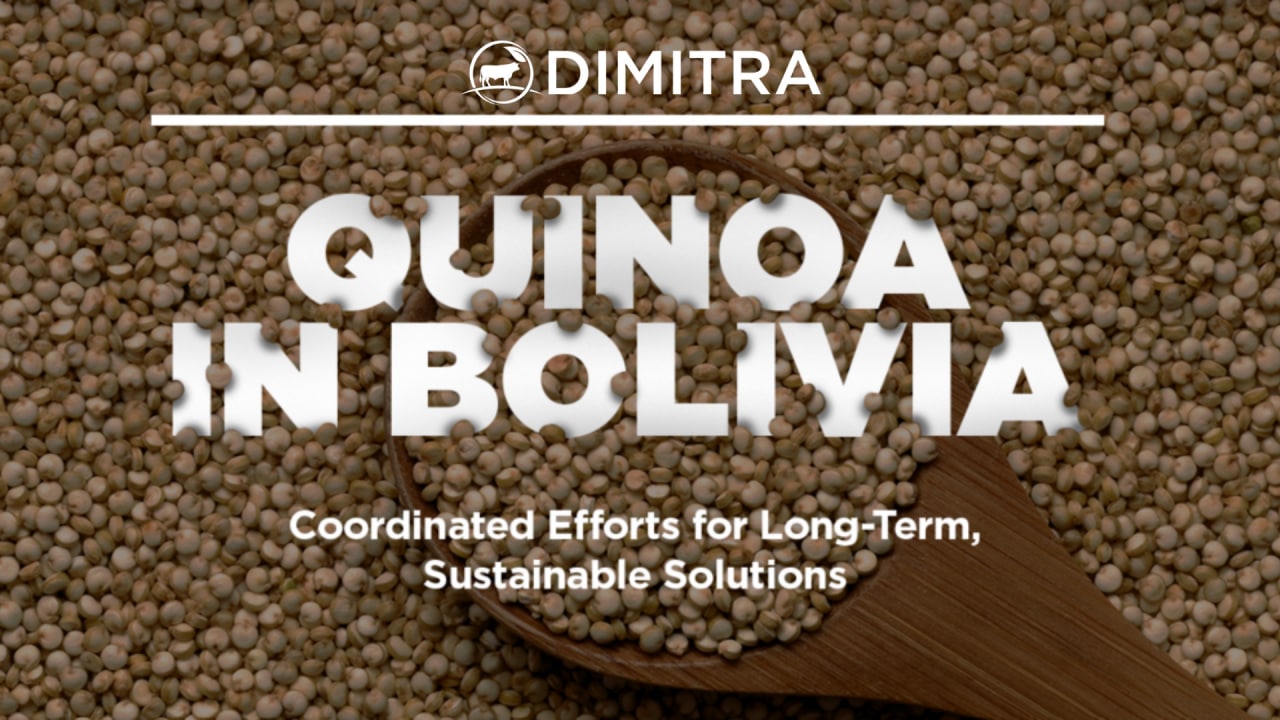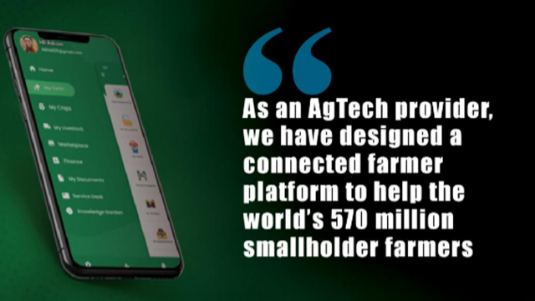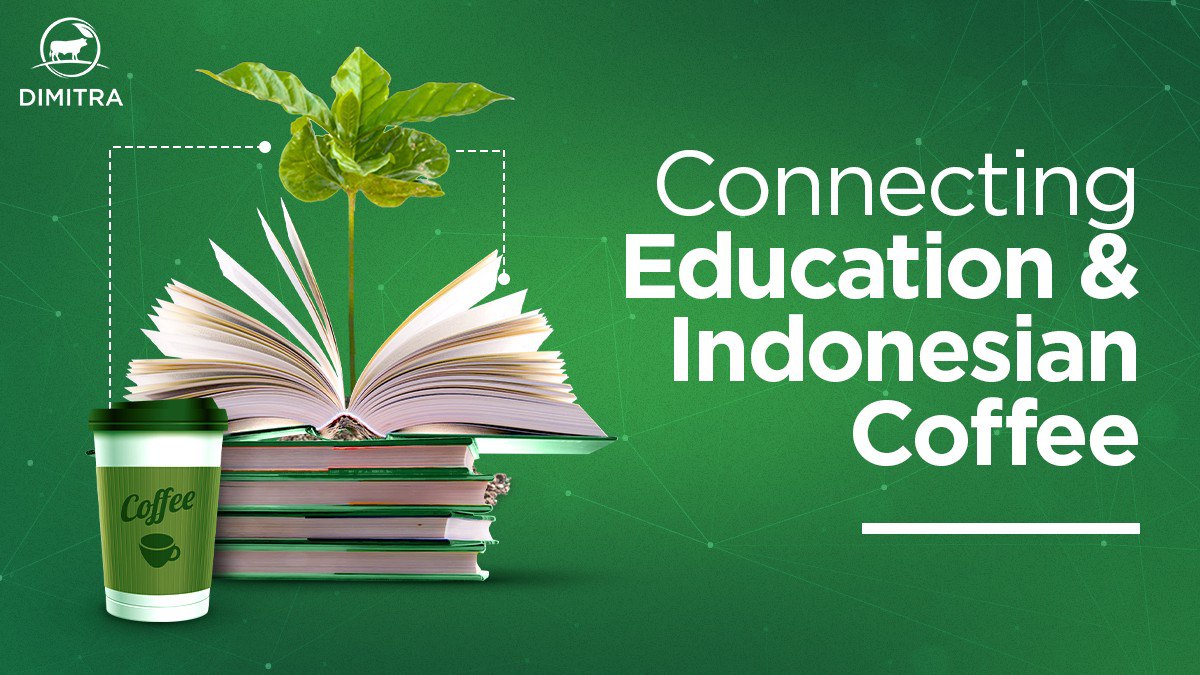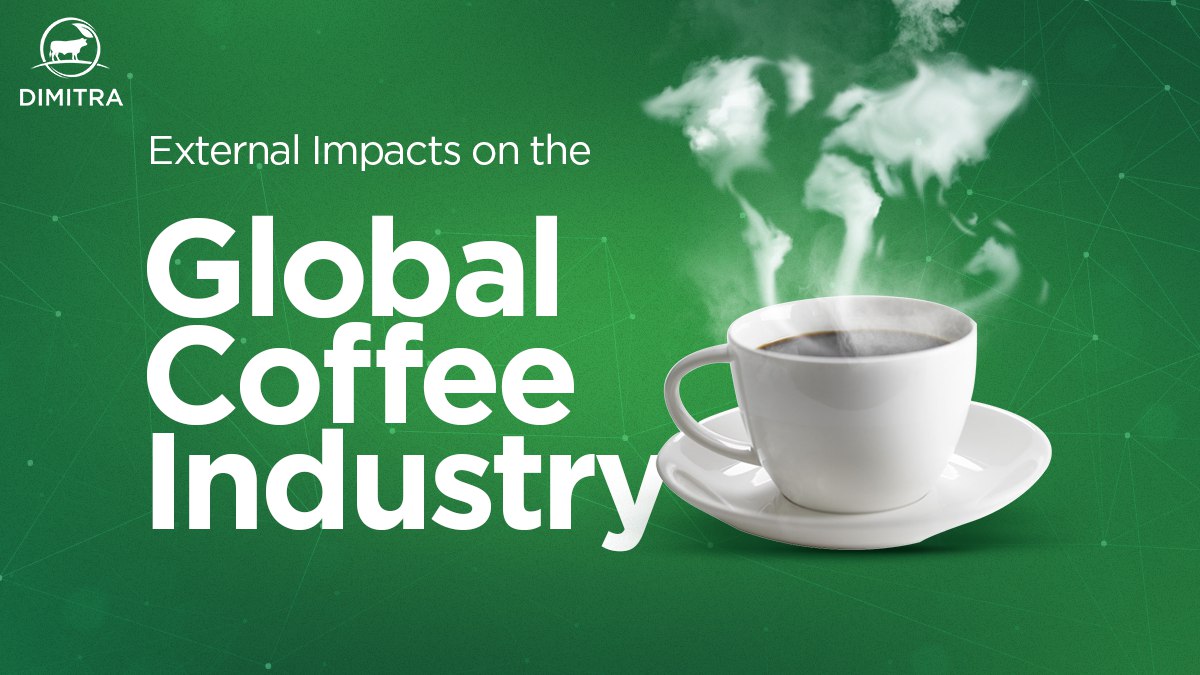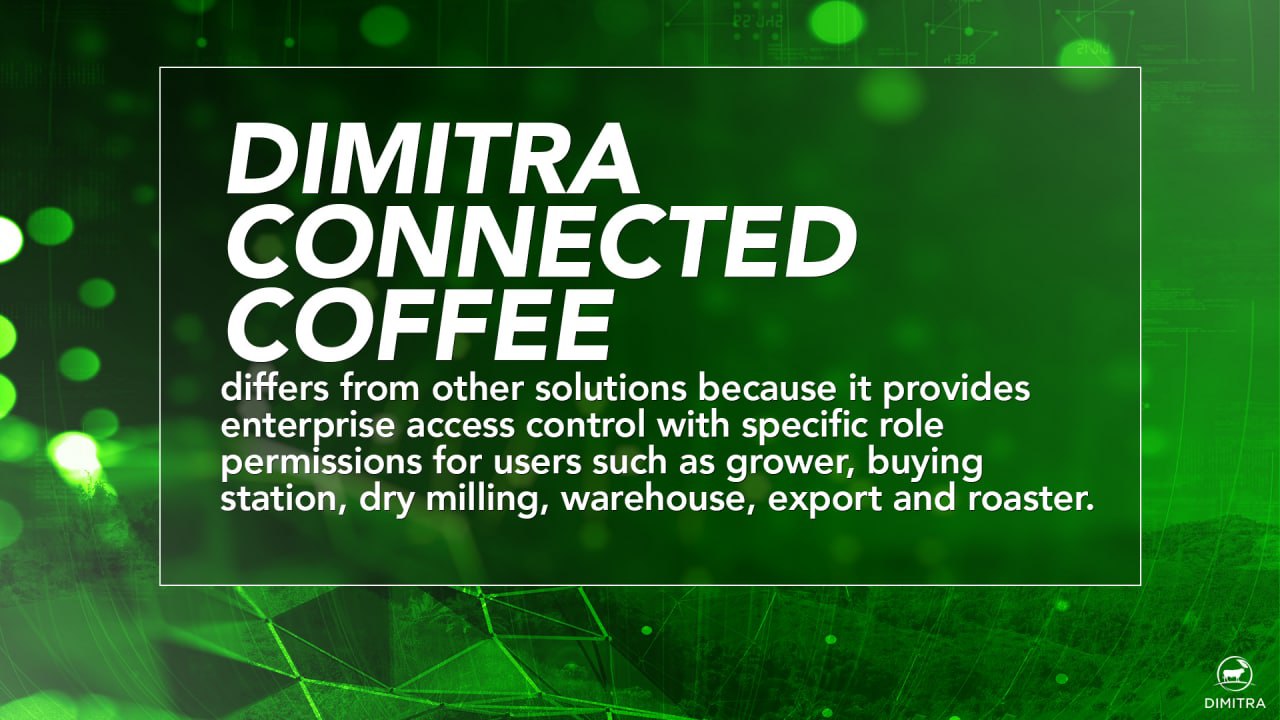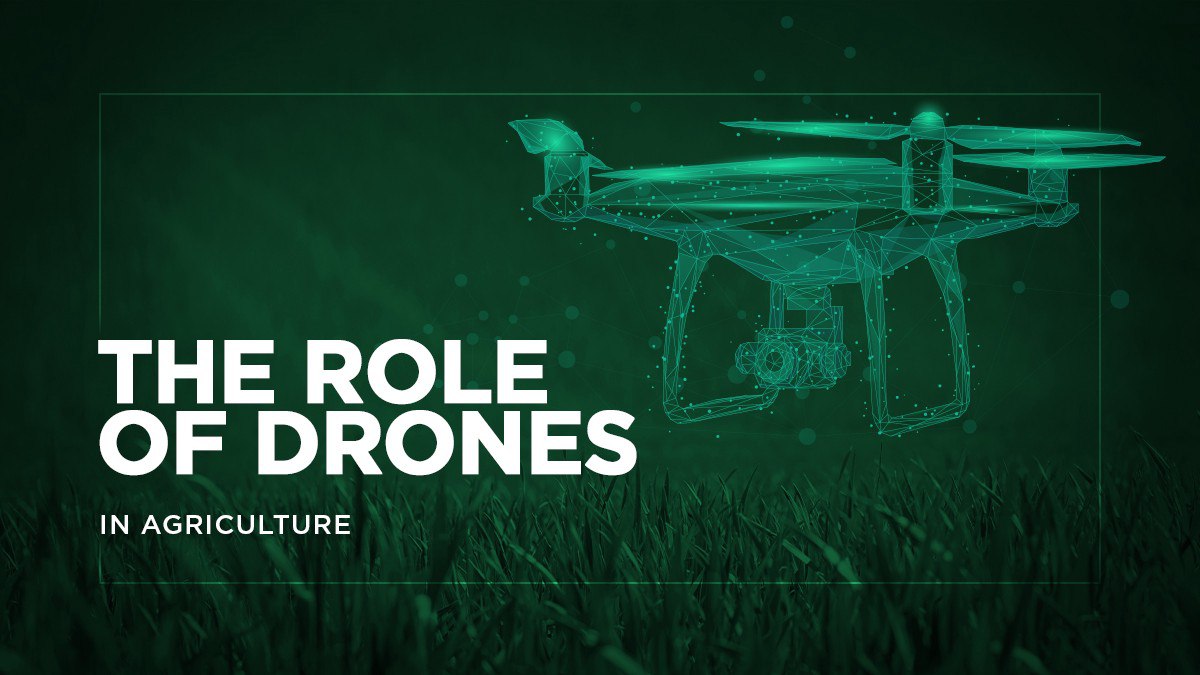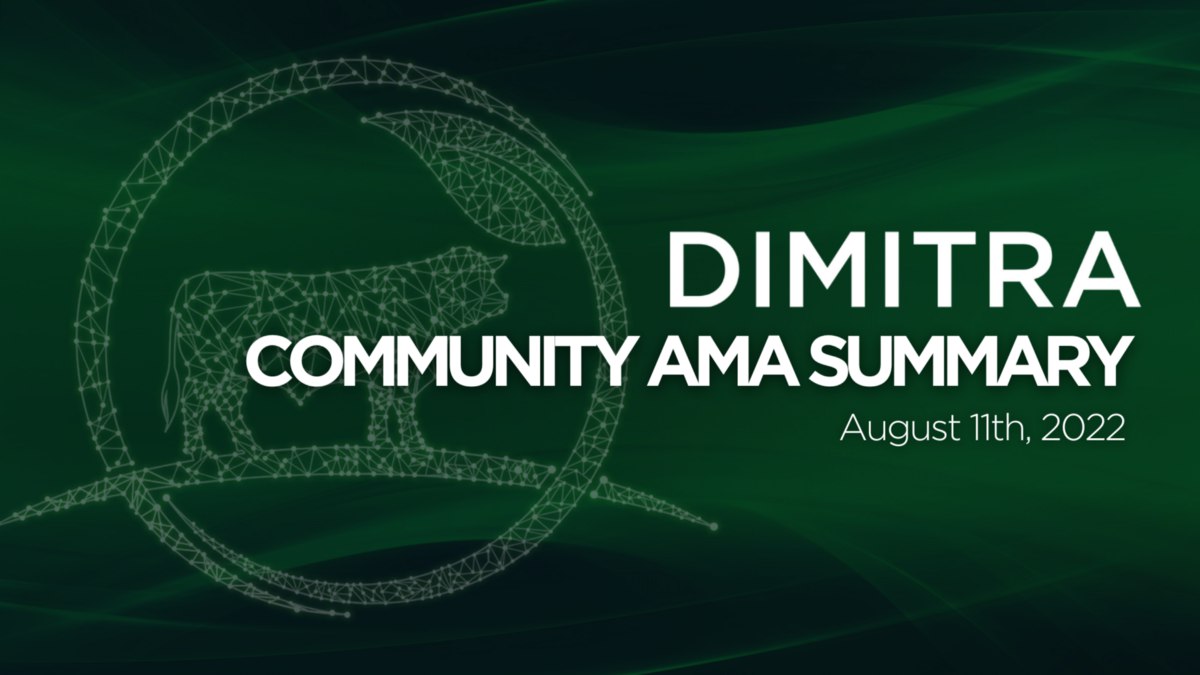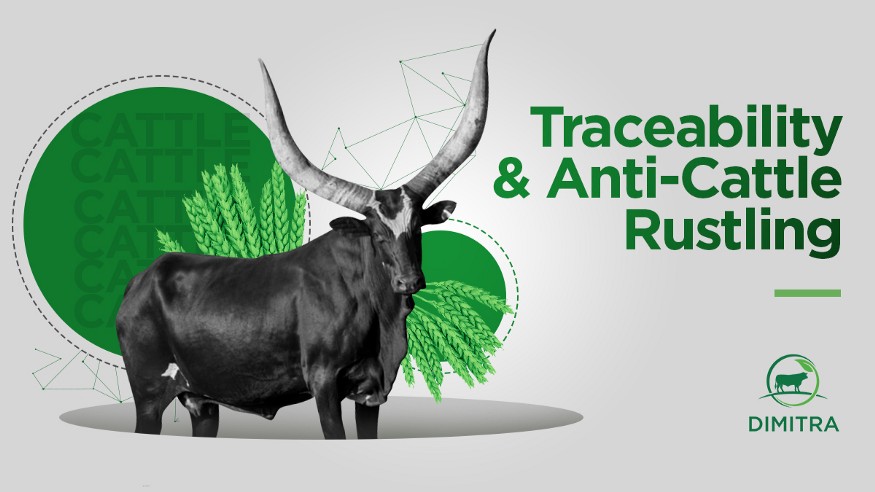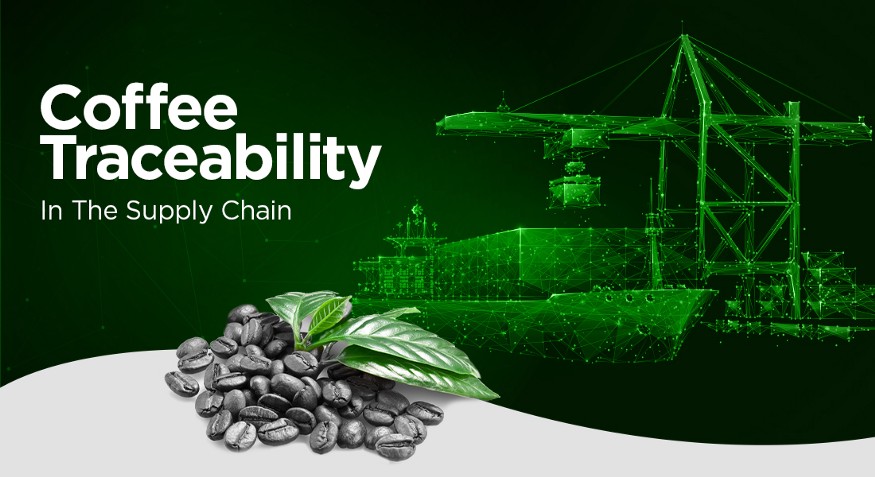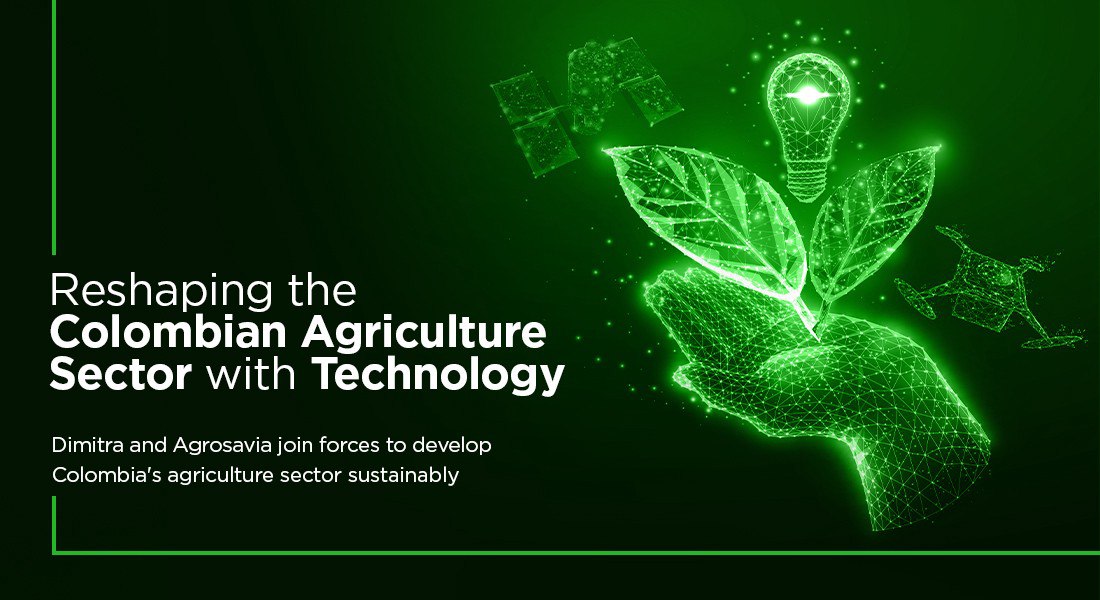Thank you to everyone who took the time to join the AMA, and submit questions! We appreciate you taking the time to be involved, and we look forward to seeing you all in upcoming AMA’s!
Q: Jon, can you please provide a brief introduction about yourself and Dimitra for those that are new to the community?
A: Hi Cassandra, thank you and thank you everyone for attending today’s AMA.
My name is Jon Trask and I’m the CEO and founder of Dimitra and I appreciate everyone being here and supporting Dimitra. I’ve been involved in cryptography, blockchain, and building enterprise software for the last 30+ years. I love creating and building enterprise technology and I’m very passionate about Agriculture and helping farmers around the world.
Dimitra is a blockchain based Agtech platform that we’ve built and the goal is to provide real utility to smallholder farmers all over the world who need our technology the most as they do not have it. We do this by increasing their yields or outputs, reducing their expenses, and mitigating their risks all through our data driven approach and platform. Dimitra’s opportunity is simply massive with there being 570 million small farms around the world.
Our Connected Farmer application is a combination of mobile, satellites, sensors, drones, machine learning and AI, track and trace capabilities and more with blockchain. Think of our Connected Farmer platform as the OS for Agtech and our DMTR token as the driver of our ecosystem. We’re now up to 15 languages within the Connected Farmer platform and we’re in the process of adding Turkish, Mandarin, and Greek. We’ve built Version 1 of the Connected Farmer Platform and we’re doing updates almost weekly and we launched Version two in May 2022.
Here’s a short video about our Connected Farmer application:
Q: Can you please provide an update? What is new for Dimitra? Do you have any new announcements? Can you tell us about them?
A: Thanks Cassandra, great question and we have a lot to update!
First, it’s been an amazing first year since we launched our token pre-sale on June 15th, 2021 and raised $6.5 mil USD. Dimitra then launched to the world on Kucoin and Uniswap on September 22nd, 2021.
I think it’s important to highlight that we’re only a one year old company and about 125 team members now 🙂 We’ve built a lot in a short amount of time and we will continue to build and do great things.
Dimitra’s scope and vision is massive and with big ambitions and plans it takes time to be realized and implemented with nations who are our customers. However, we wouldn’t be where we are if it wasn’t for you all and our community’s support.
Ok onto more accomplishments:
On Tuesday, Dimitra announced a capital investment / commitment with GEM Digital Ltd for $20 million USD. This is a huge vote of confidence in Dimitra and what we are doing and it’s also a big accomplishment considering the current bear market.
Dimitra announced a partnership with Ocean Protocol earlier this year and we’ll be selling anonymized agricultural data via the Ocean marketplace eventually. Our 1st bounty program with Ocean is live and underway.
Dimitra launched our Proof of Concept for our Coffee module on July 1st, and we go live on August 15th, 2022. Our first implementation starts August 18th with Solok Radjo in Indonesia, we also secured another contract in Latin America yesterday (announcement to come):
Here’s a great video about it — https://www.youtube.com/watch?v=cCRapanymh0&t=3s
And this article: https://dimitratech.medium.com/coffee-traceability-in-the-supply-chain-881fa02acc3f
And our announcement with Solok Radjo in Indonesia:
https://dimitratech.medium.com/connecting-indonesian-coffee-to-the-world-e84cd0a1f4a7
The Dimitra Livestock Guru was launched in March 2022.
The Platform allows farmers to learn about which results each genetic cross will produce in advance. This information can include everything from the best financial benefit in the long term to which cross could result in calving complications or higher incidence of diseases. We are now adding feed management and dairy management to the platform over the next 2 quarters.
Dimitra has also announced the following new country deals since the start of 2022:
Together we are developing the Colombian agricultural sectors sustainably through the digitization and centralization of genetic information for bovine herds in Colombia and we are applying Artificial Intelligence to help farmers make the best reproductive decisions for healthier, more productive, and profitable animals.
Form is deploying Dimitra’s Connected Farmer platform to utilize the advanced technologies to support their past, present, and future agriculture projects in compliance with the Saudi 2030 green initiative.
Fedeanco in Colombia and LATAM:
Dimitra and Fedeanco are working together to strengthen sheep and goat farming in Colombia and Latin America by assisting producers to make the best productive and reproductive decisions while increasing productivity and profitability in the sector.
Rumion in Papua New Guinea:
Dimitra is delivering precision drone spraying, spreading, and mapping services to fight invasive Fall Armyworm (FAW) in Papua New Guinea, Asia, and Northern Australia which hurts Maize productions.
Fundacion Proinpa in Bolivia:
Dimitra’s Connected Farmer Platform is being used to promote innovation and accelerate inclusion in the agricultural sector of Bolivia.
A bit more context for everyone
— Dimitra had the goal of having organizations with ten million farms under contract by the end of Dec 2021 and we finished the year with eighteen million farms under contract so we are ahead of schedule. In 2022, we have organizations with over 20 million farms and we are working with 14 nations (India, Bangladesh, Nepal, Papua New Guinea, Saudi Arabia, UAE, Egypt, Brazil, Colombia, Bolivia, Uganda, Zambia, Zimbabwe, Nigeria).
Listed on five major international exchanges: https://dimitra.io/token/#markets
Launched our staking portal: https://portal.dimitra.io/login
Has one of the highest staking rates in crypto and this says a lot about our community and your belief in what we are doing — so just a quick thank you to you all.
Have been featured in many publications: https://dimitra.io/news/
Redone our website: https://dimitra.io/
Dimitra put out a video using Unreal Engine with our partners @ Howl Media — check it out:
Dimitra has built and started implementing our Dimitra Connected Farmer Platform, Dimitra Livestock Guru Platform, and our Dimitra Connected Coffee Platform globally.
Q: Wonderful! How is the 2022 roadmap coming along? Is there anything new you’re adding to it?
A: We’re very busy updating our Connected Farmer platform on a weekly basis, we’re in the final stages of launching the Dimitra Sponsorship Program, finalizing our Farmer Points Program, working on the Dimitra marketplace within the Connected Farmer platform and a lot more.
We will talk more about roadmap in a later question.
Q: How many farmers are in your ecosystem at this point?
A: Our customers are not individual farmers but governments, corporations and cooperatives. Most of the governments do not want or will not allow transparency for their numbers published to the world. Our initial rollouts started in May 2022 with about 100 users onboarded to the new version. Keep in mind that enterprise software rollouts on a scale like ours at a national level take twelve to twenty four months.
Three of our contracts are working in the middle of rollout plans with thousands of users over the next few months. Each has their own roll out plan based on the availability and growing seasons of the crops that they work on so it’s not a one size fits all approach.
Plus, It doesn’t make sense in most cases to start collecting data in the middle of a growing season, so about 30 days before planting we start training and onboarding.
Also each contract starts with smaller groups of farmers to build comfort with the app and infrastructure. For example with the Solok Radjo deal in Indonesia, we are starting with 300 core farms being coached by local agronomy students from a local University and one of our team members. This will roll out in three phases to onboard about 3500 farms over the next 12–18 months. The next roll-out phase starts after Indonesia Independence Day with our team arriving on the 18th of August.
Great! Thanks, Jon. Now it is time for some community questions.
Dimitra Community Questions
Q: How will Dimitra solve the usage of farmers in Africa/ India etc without internet etc, so how will they use the software of Dimitra?
A: Great question, we do not sell to individual farmers, we actually sell to governments, corporations and cooperatives.
Adoption of smartphones is growing rapidly and there is more smartphone penetration than people imagine. For example, In our user areas in India smartphone penetration is over 70%, in East Africa smartphone penetration is over 30%. However, when there is no internet or cell signal we also have an offline mode. Farmers can record their data and when they go to the market or the buying station with their produce they can connect to the internet or cell towers in the villages.
Initially we are onboarding farmers with their own smartphones. The cooperatives also provide tablets that can be shared at buying stations or processing centers. A farmer can use a shared device, login and load their data. Lastly, to support literacy challenges, the cooperatives and NGO’s have personnel to provide support.
Q: Will there be a clear roadmap in the near future for investors so every investor can follow and check. It gives some clarity and transparency.
A: We always provide as much detailed information as possible but we can’t share country deals or details of deals that are under NDA. Our linktree is the best source of information for everything related to Dimitra:
https://linktr.ee/dimitratech
Over the next 6 months we are releasing:
Connected Coffee — August 15th, 2022
Connected Coffee v2 Traceability — September 2022
My Livestock (microservice) — November 2022
Marketplace — October 2022
Crop reporting — September 2022
Advanced satellite with 15 additional reports to the existing 5 reports — September 2022
Farmer points program — October/November 2022
A farm activity scheduling and calendar tool — December 2022
Another 10 crops — a few monthly
Additional languages — Greek, Mandarin and Turkish
Livestock Guru — Dairy Management — January 2023
Livestock Guru — Feed management — October 2022
We are also starting on an iOS version of Connected Farmer for launch next year
Finalizing our Farmer Points Program designs this summer and starting development in fall 2022
Integrating with Polygon in the fall of 2022
Q: What is the idea/plan of Dimitra for more exposure? Marketing? Listing? Etc.
A: We are always in discussions regarding listings and have recently listed on Bittrex Global. And will not and cannot comment on further exchange listings as exchanges reserve absolute non-disclosure until the deal is complete.
Dimitra is looking to add more crypto-focused marketing resources and are seeking a crypto marketing specialist to join the team. We already work with two major crypto marketing organizations who will continue their work.
Q: Why has the tokenomics of the project changed, where 800 million tokens have gone, has the date of coin distribution changed? whether it is planned to expand from the use of other networks (SOL, BSC) , whether it is planned to list the token on other exchanges? What difficulties do you experience when implementing the application to the masses? How many specific users use your app and in which countries?
A:
- 800 million tokens have not yet been minted, while 200 million have been minted.
- 58 million of those are in an operating float, not yet distributed.
- We have almost 20 million sitting in market-making accounts at various exchanges for liquidity.
- 57 million tokens are currently staked
- 4.6 million of the presale tokens have been redeemed and are in investor accounts.
- DMAS has 30 million tokens and are distributing them as monthly staking rewards
- Our executives and employees are holding (HODL!) their tokens. To date employees and contract employees have only sold 66,000 dollars with the majority of those having been sold by contracted developers who have finished their work and left the company.
- Many of you have seen the announcement of our GEM deal. GEM is a great partner with 3.2 billion in current investments. We have placed 33 million tokens in a digital vault for their initial purchases. This will be updated soon on CMC and CG.
- The balance of the tokens are active on the market coming from trading, purchases after the presale, or compensation for our marketing activities.
- We are evaluating a project to develop part of our farmer points program on Polygon to reduce gas costs. We can comment further on this as the design develops. Our target timing for this initiative is the end of year.
Q: Will the Dimitra website feature its own APY calculator to show compounded interest yield 1Y, 3Y and 5Y out? If so, when?
A: Great idea! I’m going to add it to our list of things to do. However these things take time 🙂
Q: Since DIMITRA is well on its way to be heavily involved in Trade finance and CeFi, Does DIMITRA plan on becoming ISO 20022 compliant?
A: Interesting question. With current crypto market conditions we have delayed the launch of our farmer loan program.
We are working with potential coffee growers to further determine their needs from a trade finance loan program. They are quite interested in more trade finance options but we need to further study compliance in the coffee growing regions of the world. As these negotiations evolve we will continue to evaluate ISO 20022 compliance.
I used to sit on the ISO blockchain committee working on data related ISO programs, so I am a fan of many ISO programs.
Q: Can we get some usage metrics for the SaaS solution? – Dimitra Community
User data, token usage etc
Not asking for names obviously as understanding that would breach agreements, but some stats would be great.
How many companies onboarded, how many users etc actually using the software
A: Like a wheel, things will move faster and faster over time. The first implementations and building and testing the platform takes the longest amount of time and effort. We are going as fast as humanly possible and we are pushing our dev teams :).
Implementation schedules are based on our partners timeline. They want comfort, they need to work out training and communications and need to align with growing seasons.
Often the look for customizations which can add time to the schedule.
Our first three customers are private companies and we treat their info privately.
Q: Is there a roadmap for releasing the software in other countries?
A: There is not a public release roadmap for specific countries.
Our country deals each have specific start dates set through the contract planning process. Those dates are controlled by our customers and the amount of customization the deal requires of the software. The timelines generally are not ours to discuss unless the client gives us permission.
We are negotiating in many more countries and will likely close several more deals this year.
Our new Connected Coffee App already has 3 deals in negotiations. We are also getting significant interest in our satellite analysis.
Q: Hi there, i have a question about the tokenomics. If farmers use the tokens they have in their app to buy services (farmer point program), where do the tokens go? Are they getting locked into a treasure or does they enter back into circulation? Best regards
A: Simply put the tokens pay for the cost of the goods or service being purchased and the remainder remains as profit within the Dimitra Ecosystem.
For example, when a purchase for a sensor is made in the Dimitra marketplace, funds (or tokens) are sent to the OEM manufacturer, the sensor is sent to whomever bought it and the margin that we put on the transaction if its in DMTR will be sent to a wallet. We have costs associated with the marketplace, so those need to be handled first but over time that wallet accrues DMTR tokens and gets reinvested in products and services which can be sold.
This grows a perpetual cycle of token demand and profit. The profit remains within the ecosystem allowing for top line and bottom line growth.
Q: Is your platform suitable for Crypto beginners? Or is it only appealing to professional users?
A: Our platform is really for farmers, agronomists and the food chain.
Q: What are the benefits of holding your token as long term investment? Can you tell us about the motivation and benefits for investors to keep the your token in the long run?
A: We are a growing corporation. The agriculture and food space is one of the most lucrative in the world. Smallholder farmers are one of the fastest growing verticals adopting mobile phones.
Q: What’s your main focus right now, are you focused on the community or market/Exchange or the products?
A: This is a balance, we have various teams that focus on each of the above. We are growing and adding additional team members. Balancing community and customers alongside developing the tech are keys.
Q: Revenue is an important aspect for all projects to survive and maintain the project/company. How have you been able to build a complete project and what is the way to generate profit/revenue of the token? What is the income model?
A: We have many revenue streams:
– Licensing
– Product and service sales
– Satellite
– Data Sales
– Ag consulting
– Marketing
Q: Are you planning to promote your project in countries / regions where English is not good? Do you have a local community for them to better understand your project??This looks like an amazing project!
A: We have local salespeople in 70 countries and are promoting in 4 languages right now. We will continue to grow this. We’ve built the app in 15 languages and are adding 3 more before the end of summer.
Q: What is the revenue model? How it can be beneficial for both investors and for project itself?
A: Much of our revenue will be transacted in DMTR which will add profitable volume and create a growing ecosystem.
Q: Did you consider community feedback/requests during the creation of your product in order to expand on fresh ideas for your project? Many projects fail because the target audience and clients are not understood. So I’d like to know who your ideal consumer is for your product?
A: We spend a lot of time working with community and customers on their product needs. We have a large dev team and have many roadmap items.
**
Great! Thank you to everyone who submitted your questions, the winners of the community questions submitted earlier this week are: @THFC_Bear, @Whiteman5, @Jo, @Timmer83, @mikenit890. We will be reaching out to you to ensure you get your DMTR! Thank you everyone for joining today, it was great to see so many people actively participating on both Telegram and Twitter. We will take your questions into consideration for the next AMA, we hope to see you there!
